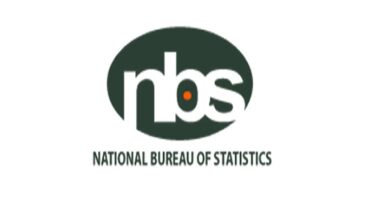Carving a Pathway to Fiscal Sustainability in a Time of Pandemic

“Fiscal conservatism is just an easy way to express something that is a bit more difficult, which is that the size and scope of government, and really the size and scope of politics in our lives, has grown uncomfortable, unwieldy, intrusive and inefficient“. –P.J.O’Rourke
The trouble with state finances today is not the challenge of revenue decline, low capital expenditure and annual recurrent cost increases, these issues are taken as given and represent recurring constants in the government’s equation of fiscal management. Indeed, these issues are junior to the bigger problems of imagination, strategy and execution. Every great human endeavour is a product of a mind or a collection of minds committed to thinking beyond the ordinary, a mind or collection of minds prepared to tackle ordinary problems in extraordinary ways. If states must navigate past the problem of the novel coronavirus pandemic (COVID-19) and its multiple socioeconomic challenges, they must begin to see the big picture as they prepare for fiscal resets and economic realignments. States must begin to adopt fiscal frameworks primed to grow the economy of tomorrow and not the economy of yesterday. We note that governance is not easy but it is also not rocket science. For a government to be successful in a period of a global trade and health crisis it cannot afford to be stuck with the issues of yesterday, it must be prepared to address the issues of the future because the future is here.
We must begin to understand and appreciate the importance of the principle of measurement in economic management. We must understand that what cannot be measured cannot be planned and what cannot be planned cannot be achieved. In more developed climes the lifeblood of governance is centred on data gathering, data processing and data analysis, these processes funnel into the more visible acts of policy formulation and execution. In the United States of America, for example, the Congressional Budget Office (CBO) provides a stream of data that enables citizens to assess how well municipal, state and national economies fare. The apolitical nature of the CBO creates confidence and establishes the credibility of the governments actions in the minds of citizens.
In God We Trust Everything Else Is Data
The data provides citizens with a set of empirical references that build deep confidence in the process of governance. Regular and accurate data provided at scheduled periods make the citizens aware of not only the government’s plans but also provides a nexus between citizen’s responsibility and the government’s obligations. If citizens desire omelets then they realize that they must be prepared to break eggs. Or if people desire a meal of pounded yam, they must be prepared to befriend the pestle and mortar. However, trouble starts when the citizen’s eggs (i.e, taxes) result in audio (or phantom) omelets or when the citizen’s yams, do not feel the pounding beat of a pestle doing justice to the bottom of a mortar.
Data establishes a sense of equity and the more the sub-national governments rely on data as modes of citizen engagement, the greater the trust that is established between the governed and the governing.
BudgIT through its annual State-of-the-States reports creates a framework for objective and enlightened interaction between taxpayers and tax managers. Indeed by providing comparative budget data across sub-national entities or states, BudgIT offers a platform for citizen’s assessment of the fiscal performance of those they elected to public office. A governor and his or her government are as good as the value they add to the average lives of the citizens within their states. The measure of the worth of a governor of a state is the measure of his or her efforts at fiscal stability, secular growth in gross domestic state product, and the improvement in social capital per head.
This is brought to life by a quick review of the key findings of BudgIT’s 2020 State-of-the-States report. The report notes as follows:
- The total debts of the states in 2019 rose by 162.87% to N3.3trn. This means that state government budgets have been increasingly funded by local and foreign debts and state finances have required increasingly larger amounts of financial leverage. Is this good or bad? Well, it depends. If a state government’s revenue (particularly its internally generated revenue (IGR)) can cover recurrent expenditure and equally meet at least 50% of its capital needs, then leveraging the states expected future cash flows may be a smart fiscal manoeuvre to speed up growth and provide critical infrastructure at a reasonable cost, however, if a state appears to be struggling to meet its recurrent expenditure and decides to borrow heavily to cover its regular operational and capital costs, then the outcome could be very unpleasant. Like an ostrich with its head buried in the sand, a state with a heavy debt overhang leaves its rear vulnerable to being kicked very hard by harsh economic realities. If the debt obligations of states were fairly high pre-COVID-19, then in 2020 the financial leverage of Nigeria’s largest sub-national entities, the states, is bound to get worse. BudgIT’s figures of the debts of states in 2019 give little if any warmth.
Illustration 1 Eyeing State’s Domestic Debt Monster H1 2020
Illustration 2 Eyeing State’s Foreign Debt Beast H1 2020
- BudgIT’s State-of-the-States 2020 report notes that several states have seen their overhead costs spiral. State’s like Ekiti, Kogi, Kano, Plateau, Kwara, Taraba, Adamawa and Benue have witnessed relatively high recurrent costs to revenue ratios. Most recurrent expenditures represent overhead expenses that generally speak to the relatively high ratio of public servants to the state’s overall labour force. This brings about subnational policy dilemmas that are made worse by pandemics such as COVID-19. A high public-sector labour force requires high fiscal commitments to recurrent spending to the detriment of capital spending which would drive private-sector enterprise and provide more government revenue, faster-paced industrial development, upgrading of human capital skills and the deepening of domestic industrial value chains.
- The five states that topped the 2020 State-of-the-States report on its Fiscal Sustainability Index were: Rivers state, Anambra state, Ogun state, Lagos state and Kano state. So, maybe we should ask the question; what do all these states have in common? The answer appears to be that they are all key economic hubs. Each state demonstrates a competitive and strategic advantage either in the oil and gas sector (Rivers state), commerce and services (Lagos), manufacturing and processing (Anambra and Ogun states) or manufacturing and agricultural produce (Kano state). The dominant presence of these sectors within the respective states mentioned provides large and unique economic multipliers that are yet to be optimally explored.
- The BudgIT 2020 report on Nigerian states highlights five states with notable foreign debt portfolios. At a time of COVID-19 and with oil prices crawling between a US$40 per barrel and US$45 per barrel price band, the outlook for the naira to foreign currency exchange rate is dim. This means that states with high foreign debts would have to repay the loans with larger naira income than was planned at the time the debt was contracted thereby putting added pressure on state finances. The five states with the highest foreign debt budgets were Lagos (US$1.5bn), Kaduna (US$554.7m), Edo (US$275.92m), Cross Rivers (US$208.96m), and Bauchi (US$133.9m).
Illustration 3 Narrowing The View on Subnational Challenges
Bringing LGAs Into Play
State Governments have been ambivalent about the fiscal status of local governments within their states. The average local government authority has been treated as a convenient nuisance; convenient for federal revenue allocation but a nuisance concerning their usefulness as units of fiscal administration. LGAs must be considered as important parts of the country’s fiscal architecture they should not be allowed to hide behind the finger of their state budgets. This unit of administration must be held accountable and should attract as much attention as states. Indeed, we believe that BudgIT should prepare itself for a deep dive into the State of State LGAs. Accountability should be as much a bottom-up affair as it is a top-down one. Therefore, hopefully, in BudgIT’s next report on the states, we would like to see the relative financial positions of a selected number of LGAs if not all the LGAs in the country. Or perhaps, BudgIT could opt for a separate report on LGAs, which would have a powerful effect on improving the quality of governance at the grassroots where most citizens make their daily living.
We note that all too often analysts, commentators and citizens generally tend to concentrate on the condition of the federal government’s budget rather than the budgets at the everyday levels of living which is the budgets of the sub-nationals or states and local governments which are just as important than the federal fiscal balance.
Running out of Time and Ideas
With the coronavirus pandemic terrorizing global economies frontier nations like Nigeria are running out of time and unfortunately they are equally running out of ideas. But extraordinary times require extraordinary measures, in the words of Albert Einstein, we cannot solve a problem at the same level of thinking that created the problem in the first place, in other words, we need new paradigms. The nature of the fiscal realities of Nigerian states in an era of a global health pandemic and lower international oil prices would require deeper thinking and more aggressive action. Businesses within states will experience revenue meltdowns in the year with their profits disappearing. This would lead to lower tax revenues and higher levels of unemployment as businesses collapse. The consequence of failing private enterprises would be that states from 2020 will see their debts rise as the means to repay loans vanish. There will be very few if any federal fiscal support schemes by way of state financial bailouts or federal loans in 2020 as the tight financial position of the federal treasury itself would make this impracticable. The fiscal support structures put in place by the federal government in 2016/2017 to help states with their financial difficulties cannot be repeated any time soon. In fact from the year 2020, the federal government will have to deal with the fiscal demons of its own.
Thinking Outside The Traditional Box
To wriggle outside the problems states will need to be imaginative, creative and strategic. A few things states might need to do would include:
- Generate liquidity by liberating idle assets. Many states have some projects that have been abandoned but might be considered attractive to private sector investors. The projects could be sold to private interests on the best cost-recovery basis.
- States could encourage companies to support infrastructural development projects by constructing the infrastructure and compensating investors with tax credits which they can charge off against present and future tax obligations.
- States could ignite economic activity by removing obstacles to business growth in their respective territories. In some states the simple control of non-state actors that collect different levies and tolls could bring down the cost of doing business in their states, this would reduce product prices and service costs thereby facilitating faster state GDP growth which in turn would improve the state’s IGR. For states that depend heavily on federal funds (FAAC) for survival the ease of doing business and the stimulation of the state’s domestic economy is crucial. As federal revenues decline on the back of lower oil earnings the size of the monthly FAAC distribution will decline and this would cause major fiscal challenges for states with low IGR. In other states what may be needed is rethinking, reimaging and restrategizing. This could hold for Lagos state (see illustration below).
Illustration 4 Lagos; Reimagining The Future
Illustration 5 The Facts About FAAC 2019
- States could also decide to identify core sectors of their economies and categorize them as ‘lead’ sectors. These lead sectors would be handled within a project management framework with stated objectives carried out within specific timelines and in partnership with public and private sector team leaders who provide the modelling framework with which the sectors would be expected to operate. The team leaders would be in charge of managing the resources, monitoring progress and reporting on the divergence between goals and actual performance. The essence of this approach is to change the template for growth models adopted by states in the past. The new model would be actionable based on the use of big data, informatics, artificial intelligence (AI) and machine learning. Within this arrangement data must be ‘open source’ to the managers and the traditional secrecy of bureaucracy will have to be jettisoned.
Takeaways/Endpoints
The BudgIt’s report yields up some key takeaways which would include but would not be limited to the following:
- States cannot be allowed to borrow without guidelines and limits to protect the solvency of these subnational entities. A few states could be considered technically bankrupt and if they were private commercial institutions, they would have been wound up. Considering the fiscal status of some states the challenge that needs to be urgently addressed under a period of COVID-19 is the contemplation of Murphy’s law that states that what has gone bad could get worse. To prevent this ugly outcome all states need to rethink their fiscal positions and realign their budgets with the exigencies of the time. The pork-barrel spending some states have become accustomed to must give way to stricter governance. Should we be talking about expenditure cuts in a recession? Unfortunately yes, although it sounds counterintuitive, it is inevitable if some states are to avoid dire socioeconomic outcomes.
- States must prepare for unforeseen circumstances or black swans (which are unknown unknowns) like COVID-19 and prepare for grey swans (which are known unknowns) such as poor weather conditions (floods) and the likely consequences of poor harvest on food security in 2020.
- Another takeaway is that BudgIT may need to integrate sensitivity analysis into its future reports. The sensitivity data would tell us what would likely happen if the Lagos State government’s revenue expectation slips by 20%, how would it affect the state’s budget balance? Although BudgIT’s reports are usually after the fact, for example the 2020 report addresses 2019 data, nevertheless sensitivity analysis would still give us a sense of near fiscal misses or actual fiscal triumphs compared to what could have happened given sensitivity analysis assumptions.
- The fiscal regulatory environment needs to be made clear, concise and consistent. There is still a whole lot of problems with the transperancy of state budgets.




